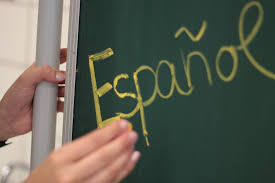Before delving into the different types of learning, it’s important to understand that learning refers to the acquisition of knowledge, values, and the development of skills and attitudes. It’s the method by which any human being assimilates specific information.

In the past, it was thought that there was only one or two ways to learn, however, there are several different types, so it’s relevant to understand each student and the content we want them to learn, so we can choose the ideal type of learning. In this instance, we’ll mention 13 types.
1) learning is implicit
this is generally unintentional, it occurs through the automatic execution of a motor behavior. If we think about it, we always learn without realizing it, for example, walking or talking.
2) Explicit learning
Which contrary to implicit learning, is conscious and intentional, therefore, it requires sustained and selective attention. This type of learning allows us to acquire information about places, people, or objects.
3) Learning is associative
As the name suggests it involves relating two stimuli or a stimulus + behavior. A clear example is the multiplication tables or the periodic table, it will be much more effective if it’s reviewed with a song, this way the brain will retain it more easily. So remember that to achieve effective learning, use visual or audiovisual elements that are enjoyable for the student. Ivan Pavlov (Russian psychologist) verified associative learning with his classical conditioning technique applied to his dog.
4) Non-associative learning

It refers to the change in reaction to a repeated stimulus. Habituation (a process where a stimulus is repeated and the response becomes less intense) and sensitization play a key role. For example, when a baby is asleep and even with the slightest noise, they wake up with a start. If this happens every time they sleep, the baby will stop waking up to the noise.
5) Learning is meaningful
In this type, the student goes through a process where they collect information, select it, organize it, and compare it with prior knowledge (new information vs. information they already had).
6) Cooperative learning
As the name suggests it’s carried out with peers. This occurs in educational classrooms, with a maximum of 5 people in the team, guided by a teacher who assigns and distributes roles.
7) Learning is collaborative
Like cooperative learning, it requires more people, but unlike cooperative learning, collaborative learning is more free; this means that the teacher only proposes the topic and the students decide how to approach it.
8) Emotional learning
This is very important, as it involves knowing and managing emotions efficiently.
9) Learning is observational
Also known as learning by imitation or modeling. It requires the participation of two people, the model (who will teach) and the student (who observes the behavior and learns).
10) Experiential learning.
Learning from mistakes is the best example. This type of learning is produced, as its name indicates, through experience.
11) Discovery learning,
Also known as heuristic learning (theory developed by American psychologist Jerome Bruner), it’s often an active learning that promotes the student to learn by themselves, discovering, relating, and rearranging concepts. Ideally, the teacher presents situations stimulating their students through observation, comparison, analysis of similarities and differences.
11) Rote or repetitive learning,
Which consists of mechanically and repetitively fixing concepts in memory without delving into their meaning. It’s when we repeat like a parrot, therefore, it’s normal to forget it in a short period. Some examples are: mathematical formulas, famous characters, phone numbers, birthdays, addresses, among others.
12) Learning type is receptive,
It’s impulsive, passive, and it’s when the student receives the content but doesn’t perform it on their own. A clear example is when reading a book, each word and the theme are recognized.




